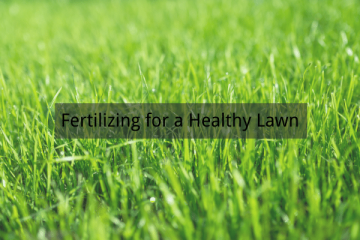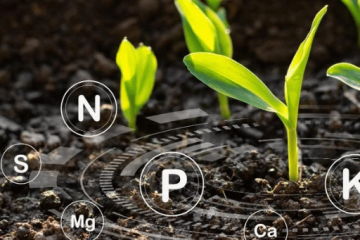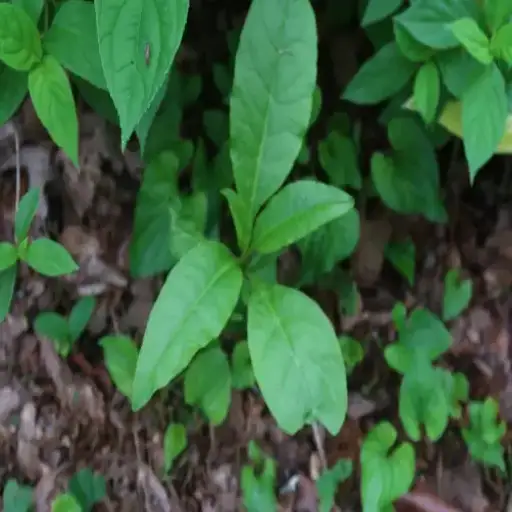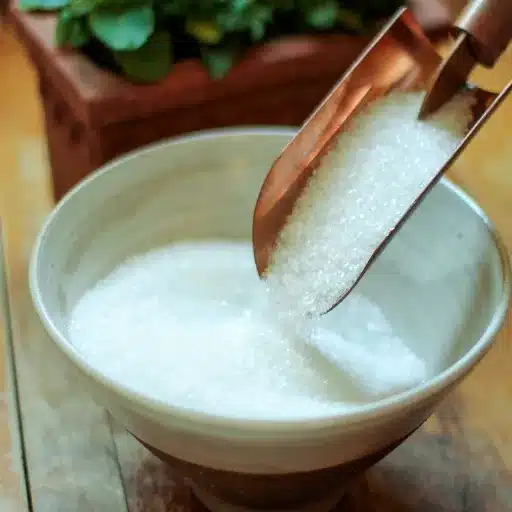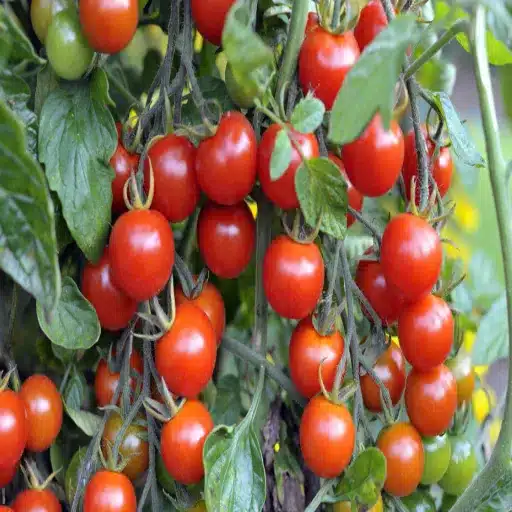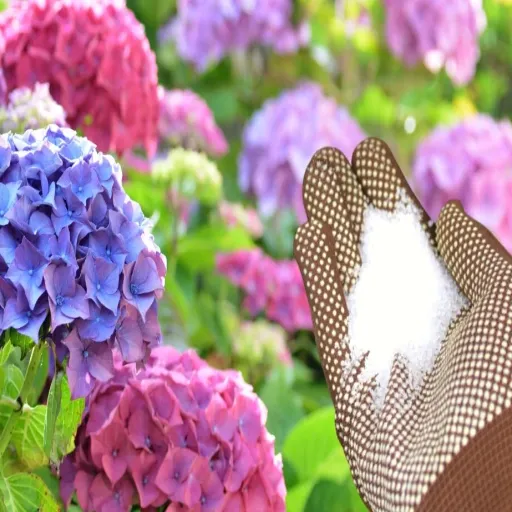Epsom salt has long been touted as a versatile and effective gardening supplement, praised for its ability to boost plant health, correct magnesium deficiencies, and enhance overall growth. However, despite its widespread use, not all plants benefit from its application. Certain species can be negatively affected by Epsom salt, leading to issues such as nutrient imbalances or stunted growth. This article aims to explore which plants are not compatible with Epsom salt, helping you make informed decisions for your garden. By understanding the science behind its effects and identifying which plants to avoid treating, you can ensure a healthier, more thriving garden.
Do All Plants Like Epsom Salt?

Which Plants Don’t Like Epsom Salt?
Epsom salt, which is magnesium sulfate, can be useful in correcting growth issues by providing specific deficiencies to certain plants. However, not all respond positively. Plants that do well in low-magnesium soils, such as many carnivorous species like pitcher plants and Venus flytraps, are known to suffer from additional magnesium. Too much magnesium can throw off their delicate nutrient balance, which restricts them from growing.
Furthermore, nitrogen-fixing plants like beans and peas do not adhere to Epsom salt, possibly making them a nuisance. Sage and thyme, known to prefer barren well well-drained soils, suffer from problems such as pH imbalance or nutrient concerns due to Epsom salt, showing that not only do they lack nutrients but so do other ingredients.
Other nitrogen-fixing plants, like peas and beans, rely on symbiotic soil conditions for nutrition and do not need an ultra-boost from soil supplements. However, interfacing with these soil additives can interfere with their growth, as these plants obtain the majority of their nutrients from the bacteria under soil chromatography.
According to agricultural studies, overusing Epsom salt can increase the concentration of magnesium in the soil, which may be detrimental to some crops like root vegetables, including carrots, radishes, and parsnips. An excessive amount of magnesium may reduce the absorption of calcium in these plants, leading to inhibited growth and reduced yields. Consider the unique requirements of your plants, conduct soil examinations before using Epsom salt, and these measures will enhance your gardening results.
Why Do Some Plants Dislike Epsom Salt?
In its widely accepted understanding, Epsom salt, or magnesium sulfate, purportedly promotes the health of crops. In practice, however, not all plants benefit from its use. One of the reasons stems from a certain sensitive equilibrium some plants maintain with the essential nutrients present in the soil. Having an excess of magnesium can hinder the balance and may disrupt the utilization of other vital nutrients, especially calcium and potassium. For example, research tells us that excess magnesium in the root zone antagonizes the calcium needed for cell wall construction in horticultural crops like tomatoes and peppers, resulting in blossom-end rot. Hence, indiscriminate use of Epsom salt would most likely lead to nutrient deficiencies rather than optimizing health.
Also, certain forms of Epsom salt can incorrectly alter the pH and salinity level of the soil. Higher amounts of magnesium sulfate can lead to greater salt concentration in the soil, thus hindering the efficiency with which a plant absorbs water. Greater salinity induces osmotic stress, a state that makes it more difficult for plant roots to draw the water required for survival. Beans and lettuce, along with some other root vegetables, in particular, are highly responsive to greater salt concentrations and may show stunted growth, wilting, or discoloration of leaves under these conditions.
Furthermore, different plants have distinct requirements when it comes to magnesium, meaning that not all soils need any further magnesium supplementation. For some plants, the soil is often good enough and has sufficient amounts of magnesium. In such scenarios, the use of Epsom salt brings an extra excess, which is detrimental to the plant’s nutrient absorption system. Regular soil testing is required to determine what nutrients need to be supplemented. Adjusting the fertilization schedule according to the crop and soil type guarantees that the plant will grow, yield, and maintain sustainable gardening practices.
How Does Epsom Salt Affect Plant Growth?
Epsom salt, or magnesium sulfate, impacts plant development positively through the provision of magnesium and sulfur—two vital macronutrients needed during photosynthesis and protein synthesis. Magnesium aids in the manufacturing of chlorophyll, which enables the plant to harness sunlight and generate energy. Moreover, sulfur aids in the production of some plant development amino acids and enzymes.
Epsom salts can be beneficial for soils lacking magnesium; however, the benefits are not consistent and are largely dependent on the soil type, plant type, and how much Epsom salt is used. Overusing can hinder the nutrient balance by raising the magnesium’s solubility, which can upset the balance of calcium and potassium absorption. For example, some sensitive crops—like legumes—have been shown to exhibit stunted growth or lowered yield when overexposed to magnesium sulfate.
The application of Epsom salt requires soil test data, along with specific guidelines crafted to the crop’s needs to optimize nutrient management practices. Studies show that applying a foliar spray with a concentration of one tablespoon per gallon of water can be controlled and supplements magnesium without disrupting nutrient levels in the soil. In this sense, Epsom salt can be beneficial for nutrient management when applied judiciously under carefully controlled conditions.
How Does Epsom Salt Impact Soil?

Can Epsom Salt Change Soil pH?
Epsom salt, or Magnesium sulfate (MgSO₄), remains neutral and won’t affect the pH of soil tending to water or modify the pH with any degree of significance. Unlike Epsom salt, lime increases the pH, and substances like sulfur lower the acidic nature, but Epsom salt does have the right chemicals that could meaningfully change pH levels. Its primary role lies in supplementation, especially providing plants with the needed magnesium and sulfur in easily accessible forms.
Burning and S, Magnesium and sulfur serve as vital secondary macronutrients aiding growth, but the presence them in the form of Epsom salt does not add soil acidity nor alkalinity perturb. For instance, the aforementioned Epsom salt undergoes complete dissolution in water, so applying it does not cause any change in the concentration of hydrogen ions, which in turn determines the pH level. Hence, any differences noticed in soil quality after applying Epsom salt are most likely due to another factor, such as the quality of water used, the microbial action present, or other soil amendments done simultaneously rather than the salt itself.
To ensure the soil is maintained at optimal health, proper testing is key in identifying nutrients that are in deficit to avoid masking nutrients that may result in excess application, leading to loss of nutrients or leaching occurring without changing pH.
Is Epsom Salt Suitable for All Soil Types?
Sodium sulfate, or Epsom Salt, is a type of salt that is not useful in every scenario because not every soil type would benefit from it. It is advantageous in certain ways, but a Mg-deficient soil will only benefit from it. If a soil already has too much magnesium and calls for calcium or potassium, antagonistic effects may be observed if Epsom salt is added.
Epsom salt’s short life span as a boost provider is well suited for sandy soils that are poor with nutrient retention. These soils are already good with nutrient retention. Thus, it cannot be assumed that a large-scale application is the best option, as too much magnesium could lead to long-term compaction or depletion of mineral-rich pores. Soils high in pH and coming from dry areas do not make use of Epsom salt because while they may have a shortage of other minerals, magnesium-rich soils allow for other means to aggregate.
Diligent testing of the soil is essential to prevent indiscriminate application of fertilizers, salts, and other herbicidal compounds. Proper Epsom salt application and soil maintenance can be achieved by primary identification of nutrient deficiencies through tests, which protects the ecosystem from further adverse effects.
Does Epsom Salt Cause Nutrient Deficiency?
While Epsom salt itself does not inherently cause nutrient deficiencies, improper or excessive application can disrupt the balance of nutrients within the soil. Epsom salt, which is chemically magnesium sulfate, primarily introduces magnesium and sulfur to the soil. Overuse of Epsom salt can lead to elevated concentrations of magnesium, which may interfere with the uptake of essential nutrients such as calcium and potassium. This imbalance can ultimately inhibit plant growth and development.
Studies indicate that magnesium-rich soils can reduce the availability of calcium by competing for uptake pathways in plant roots, particularly in acidic or sandy soils prone to leaching. Furthermore, as sulfur levels increase, there is a potential for acidification, which can negatively affect the solubility of other vital nutrients. To mitigate these risks, it is critical to conduct comprehensive soil testing before applying Epsom salt. Such testing ensures that supplementation targets specific deficiencies without inadvertently introducing imbalances.
Therefore, while Epsom salt can be a valuable tool for addressing magnesium or sulfur deficiencies, its application must be precise and informed. Misuse not only diminishes its benefits but also has the potential to disrupt the delicate nutrient equilibrium essential for optimal plant health.
What Are The Risks of Using Too Much Epsom Salt?
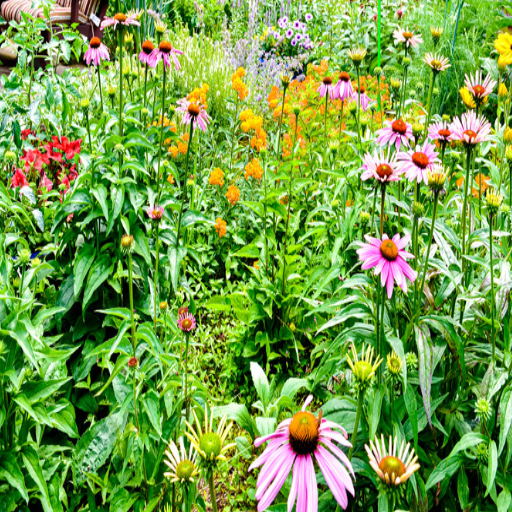
How Much Epsom Salt is Too Much?
Repetitive use of Epsom salt can hurt plant and soil health. Epsom salt, as magnesium sulfate, does serve basic nutritional purposes, but when too much is used, there is an imbalance with the nutrients present in the soil. Specifically, when there is too much magnesium, it can hinder the uptake of other critical minerals like calcium and potassium, which can then enable plants to stagnate in their growth and development.
Most studies suggest that the upper limit of one to two tablespoons of Epsom salt per gallon of water is ideal, and a maximum frequency of once a month is recommended for most plants. If done more than suggested, soil toxicity may occur, indicating an increase in salinity, which leads to a stunted root system unable to consume water and nutrients. Furthermore, the accidental over-application of Epsom salt in sandy soils might worsen leaching, which depletes nutrients meant to be captured by plants.
Custom application rates based on regular soil assessment while balancing crop, soil, and the surrounding ecosystem can help in achieving desired nutritional benefits while avoiding detrimental impacts from too much Epsom salt.
Can Excess Epsom Salt Lead to Plant Rot?
Indeed, excessive use of Epsom salt (magnesium sulfate) can contribute to plant health problems, including plant rot. Although Epsom salts are known for providing magnesium and sulfur, which are required for photosynthesis and enzyme activities, their overuse increases soil salinity, estranging balanced nutrients, which upsets the equilibrium of nutrients needed. Excess salinity also decreases the ability of the plants to absorb water effectively, leading to water stress. When roots become dehydrated or damaged due to improper water intake, the plant becomes increasingly vulnerable to fungal or bacterial pathogens that cause rot.
Another idea is that sprinkling magnesium salts reduces the uptake of other important nutrients like calcium and potassium. Calcium is an important structural element in the cell walls of plants, and too little calcium retards cell weakens a plants resilience against eroding environmental stress factors. Rotten stems, wilting leaves, and rotting fruits are some striking symptoms that are attributed to an imbalance of nutrients from magnesium and other subpar dominant elements.
Soil chemistry studies show that poorly draining or waterlogged soils intensify the risk of rot due to the presence of excessive salts. This enhances the anaerobic conditions for disease-causing microorganisms like Fusarium or Pythium spp. that infect susceptible stem and root parts. Through knowledge and proactive management of existing magnesium and sulfur levels in the soil, rot misapplication risks can be mitigated by safeguarding optimal Epsom salt application while optimizing plant health.
What Happens When Plants Receive Too Much Magnesium?
Excess Mg in plants can worsen growth by disrupting nutrient balance. One key effect is the prevention of the absorption of other important nutrients, like calcium and potassium. This negative imbalance often leads to a deficiency with poor structural integrity and stunted growth. This also weakens stress resistance in plants. The competition developed for Magnesium over other essential nutrients occurs because all these nutrients use the same absorption pathways, and the overabundance of Magnesium utilizes all those pathways.
Another important parameter that magnesium affects is the structure and pH of the soil. Compounding the problem, too much magnesium in soil’s low systems is dple or loosilted soils The dispersion of soil particles stemming from excess magnesium sets into motion not only compacted soil but weakens soil permeability and aeration. This creates conditions that block plant roots from accessing water and oxygen. Moreover, increased levels of magnesium can elevate soil pH, rendering some nutrients unavailable. Micronutrients like iron and manganese, which are vital for plants, are needed direly but turn dormant due to poor conditions.
Visual indicators of magnesium excess in plants are chlorosis or yellowing of leaves, leaf curling, and other nutrient-associated problems. In the absence of soil tests, magnesium excess might be mischaracterized as other deficiencies, and therefore, magnesium management through routine soil examinations and adequate fertilizer application is crucial to plant soil health. Recognizing the negative effects losses of plant magnesium can cause enables growers to take proactive measures to enhance these plants and ultimately optimize yield results.
How to Use Epsom Salt Safely in the Garden?
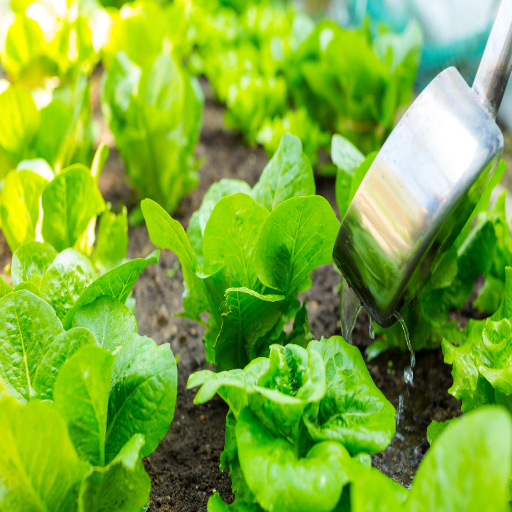
What is the Recommended Amount for Epsom Salt Application?
The use of Epsom salt in gardening varies with the type of plant, the soil, and other growing conditions. One of the most effective ways to apply Epsom salt is through foliar spraying or soil drenching. Also, for general use, one can spray Epsom salt diluted in water in the ratio of 1 tablespoon (around 15g) to 1 gallon of water. This is useful for plants with magnesium deficiency symptoms like yellowing leaves and stunted growth.
For larger applications, like in a vegetable garden, Epsom salt can be spread at the rate of 1 to 2 pounds per 100 square feet of soil. This not only helps fulfill magnesium requirements but also minimizes the risk of surpassing the target amount. For potted plants, adding a teaspoon of Epsom salt to the soil or water every 4 to 6 weeks is often enough.
It is best to have soil tests done beforehand to prevent overusing Epsom salt, which can heavily imbalance a plant’s nutrient levels. This can end up doing more harm than good to the plant and can also lead to the pollution of groundwater through uncontrolled runoff. It is best to stick to the guidelines when working with Epsom salt and adjust the quantity to suit the needs of a particular garden.
How Can You Test If Your Plants Need Epsom Salt?
The most dependable way to know if your plants require Epsom salt is by conducting a comprehensive diagnostic soil test. Soil testing augments magnesium and nutrient quantification and evaluation. In case the soil test indicates low magnesium levels, it can be helpful to add Epsom salt.
Moreover, the need for Epsom salt can also be assessed by analyzing the plants for magnesium deficiency symptoms. These symptoms include yellowing leaves in between the veins (interveinal chlorosis), poor fruit bearing, and stunted growth. This is usually the case in tomatoes, peppers, and roses, which are more demanding in magnesium. These symptoms, however, should be confirmed through a soil test before Epsom salt is added, as other nutrients or diseases could also lead to such problems.
After diagnosing a magnesium deficiency, administer Epsom salts in the quantities that best fit your plants and soil. Epsom salt’s overuse can upset the equilibrium of other vital nutrients within the soil, potentially damaging the plant’s health over time.
What Are Alternatives to Epsom Salt for Plant Health?
Epsom salt may be the first example that comes to mind with magnesium deficiency because it is the most popular one, but there are other ways to approach plant health without disturbing soil balance. A great example is dolomite lime, as it offers magnesium and additionally supplies calcium, which is important for plant structural and developmental processes. Moreover, dolomite lime also improves soil pH, which is a very important factor in nutrient availability.
Other alternatives include adding well-rotted manure or compost. These organic substances automatically add to the nutrient content of the soil, including magnesium, while improving soil structure and water holding ability. Also, for some gardeners who wish to add particular minerals, magnesium sulfate monohydrate, known as kieserite, or magnesium oxide provide adequate amounts of magnesium sulfate without adding too much sulfate.
The use of any mentioned alternatives should always be accompanied by a soil test along with thorough research on soil conditions and the specific needs of the plants to form a precise plan for cultivation. Like any natural or synthetic amendments, these alternatives have the potential to create imbalances and cause long-term soil issues if over-applied.
Which Specific Plants Should Avoid Epsom Salt?
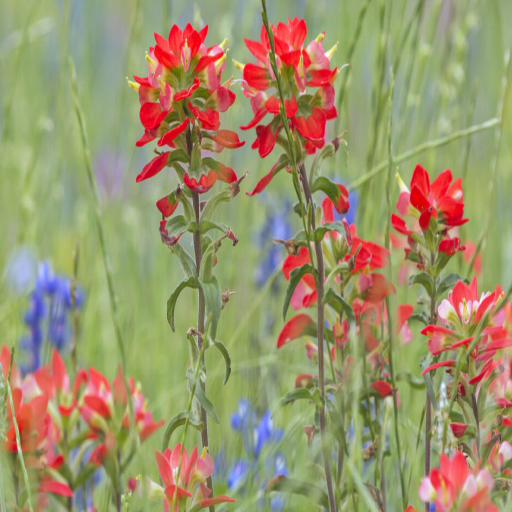
Are Pitcher Plants Sensitive to Epsom Salt?
Due to their specialized morphology, getting nutrients from prey rather than through the soil or artificial means greatly limits the nitrogen and phosphorus intake for pitcher plants. Because their natural habitat does not provide their necessary nutrients, and because they tend to be scarce with salt, the regions where these plants thrive become magically imbalanced due to the introduction of Epsom Salt. Plants like these are delicate, and Careful consideration needs to be positioned while courting the assistance of these salts, as over application can result in havoc with growth media containing these noodles of nutrient-based salt. The by-products of Epsom salt break down and transform to make sulfur and magnesium-bound salts, which prove to be heavily abundant in water and are known to limit the cell bio of sulfur salts within the region of empathy.
That sphagnum moss and mixtures of peat moss and sand serve as optimal substrates for pitcher plants due to their acidic environment and nutrient deficiency. Such conditions mimic their native bog environments, characterized by low inorganic nutrient content and high water retention. The addition of Epsom salt brings magnesium and sulfur into the system, which could potentially alter pH or increase salinity—both harmful to plant survival. Moreover, the delicate root systems of pitcher plants are highly susceptible to damage from even low levels of salt buildup, rendering Epsom salt incompatible with these plants.
When addressing magnesium deficiency, growers should take into account the specific mineral requirement and refrain from using generic materials such as Epsom salt. Regular monitoring of water purity, alongside the overall health of the plants, can validate the adequacy of the growing medium to the plant’s needs. Growing them with a focus on the intricacies of their ecosystems is vital in ensuring success and, most importantly, circumventing the use of Epsom salt, which risks halting growth.
How Do Fiddle Leaf Figs React to Epsom Salt?
Fiddle Leaf Figs are tropical plants particularly sensitive to specific nutrients due to their broad and glossy leaves. They are known to be magnesium deficient, so Epsom salt, as magnesium sulfate, is widely suggested to improve their health. Nevertheless, research shows that its application for health improvement for Fiddle Leaf Figs may need to be carefully controlled.
Although magnesium functions as an essential secondary macronutrient for all, its deficiency is rare for Fiddle Leaf Figs grown in high-quality, nutrient-balanced soil. If a magnesium deficiency does arise, symptoms might include the yellowing of the older leaves’ interveinal spaces (interveinal chlorosis). Epsom salt is capable of addressing such deficiencies by supplying magnesium, but its oversaturation may damage the nutrient profile of the soil. Excess could impede the absorption of other vital nutrients like calcium or potassium, encouraging an unbalanced state.
Soil nutrient levels, along with the plant’s environment, should be thoroughly diagnosed before introducing Epsom salt to obtain optimal results. A lack of clear magnesium deficiency indicators while proposing a dosage of Epsom salt could be detrimental due to Fiddle Leaf Figs’ well-draining soil and heightened dependency on balanced nutrients aimed specifically for them.
The research highlights the need to avoid unrestrictive add-on treatments to a fertilization plan. Broad-spectrum fertilizers that contain all the three major nutrients—nitrogen, phosphorus, and potassium (NPK)—like 10-10-10, are less impractical than isolated supplement amendments which assumes the base case of no confirmed deficiency. Thus, the overriding principles for the maintenance of aesthetically vibrant and healthy Fiddle Leaf Figs, based on the theory of conservative resource management, involve careful monitoring of the plant’s health, accurate diagnostics, and restrained Epsom salt application.
References
Frequently Asked Questions (FAQs)
Q: Is epsom salt in the garden beneficial for all plants?
A: No, epsom salt is not beneficial for all garden plants. While it can provide magnesium and sulfur, many plants do not need additional magnesium, especially if your garden soil already contains sufficient amounts. Plants that don’t respond well to epsom salt include beans, leafy greens like spinach, and Mediterranean herbs that prefer poor soil conditions. Only use epsom salts on plants when you have confirmed a magnesium deficiency through soil testing, as excess magnesium can interfere with calcium uptake in some plants.
Q: Can epsom salt kill or harm certain plants?
A: Yes, epsom salt can kill or harm plants when used inappropriately. Plants that are sensitive to magnesium, such as beans, sage, and rosemary, can be damaged by concentrated amounts of epsom salt. Unlike table salt, epsom salt won’t directly burn plants, but excessive applications can create mineral imbalances in your soil mix. This can lead to nutrient lockout, preventing plants from accessing essential minerals. Plants that suffer in alkaline conditions may struggle after epsom salt applications since it has a slightly alkaline pH.
Q: Is epsom salt good for preventing blossom end rot in tomatoes?
A: Contrary to popular belief, epsom salt is not good for preventing blossom end rot in tomatoes. Blossom end rot is caused by calcium deficiency, not magnesium deficiency. Adding epsom salts to the soil may worsen the condition by causing magnesium to compete with calcium uptake. For treating blossom end rot in tomatoes, calcium supplements are more effective. The misunderstanding likely stems from the fact that both nutrients are important for plant health, but they serve different functions, and one cannot substitute for the other.
Q: What garden plants should never be treated with epsom salt?
A: Several garden plants should never be treated with epsom salt, including beans, peas, Mediterranean herbs (rosemary, lavender, sage, thyme), carnivorous or insect-eating plants like Venus flytraps, and plants that thrive in acidic soil such as blueberries and azaleas. Plants that are adapted to poor soil conditions generally don’t benefit from magnesium supplements. Additionally, seedlings and young plants can be easily damaged by the concentrated minerals in epsom salt, as their root systems are not fully developed to process additional nutrients.
Q: How can epsom salt affect plants that prefer acidic soil?
A: Epsom salt can be detrimental to plants that prefer acidic soil because it has a slightly alkaline nature. When you sprinkle epsom salt around acid-loving plants like blueberries, rhododendrons, azaleas, and camellias, it can gradually increase soil pH, making the environment less suitable for these plants. Over time, this pH shift can cause symptoms of nutrient deficiency, yellowing leaves, and poor growth. If your soil is already alkaline and you’re growing plants that require acidic soil, adding epsom salt will only compound the problem.
Q: Should I use epsom salts on plants like peppers and tomatoes?
A: You should only use epsom salts on peppers and tomatoes if your soil is deficient in magnesium, which can be determined through soil testing. While these fruiting plants do use magnesium for growth and fruit production, adding unnecessary epsom salt can create imbalances. If you decide to apply it, use a diluted solution of 1 tablespoon per gallon of water and apply it at the base of the plant rather than on foliage. For these plants, epsom salt can be beneficial in specific circumstances, but it’s not a cure-all and should be used sparingly.
Q: Can sprinkling epsom salt directly around plants cause damage?
A: Yes, sprinkling dry epsom salt directly around plants can potentially cause damage. The concentrated minerals can draw moisture away from plant roots and create localized areas of high mineral content that may burn sensitive plants. Instead, if you’ve determined your garden needs magnesium, dissolve 1-2 tablespoons of epsom salt in a gallon of water and apply this diluted solution to the base of the plant. This method allows for a more even distribution and reduces the risk of creating “hot spots” of excessive magnesium in your garden soil.
Q: How much epsom salt is too much for garden plants?
A: The appropriate amount of epsom salt varies by plant, but generally, more than 1 cup of epsom salt per 100 square feet annually is excessive for most garden plants. For individual plants, more than 1 tablespoon per month can create problems. Signs that you’ve applied too much include leaf yellowing, stunted growth, and wilting despite adequate water. If your soil is not deficient in magnesium, even small amounts can upset the nutrient balance. Always follow the principle that less is more when applying any amendments, and never exceed recommended application rates on product packaging.
Q: Are there alternatives to epsom salt for garden plants that need magnesium?
A: Yes, there are several alternatives to epsom salt as a source of magnesium for garden plants. Dolomitic limestone provides both magnesium and calcium, making it useful for preventing blossom end rot in tomatoes while addressing magnesium needs. Organic options include compost made from banana peels (high in magnesium), seaweed extract, and well-decomposed leaf mulch. Commercial magnesium sulfate fertilizers that are specifically formulated for particular plants can also provide more precise nutrient ratios. These alternatives often provide a more balanced approach to soil amendment than simply adding epsom salt.
Q: Can epsom salt change soil pH and affect plant health?
A: Yes, epsom salt can slightly raise soil pH over time, making it more alkaline. This pH shift can be problematic for plants that prefer acidic soil conditions, such as blueberries, azaleas, and rhododendrons. While the effect is usually minor with occasional applications, regular use of epsom salt can gradually alter your soil chemistry. Plants adapted to specific pH ranges may show signs of stress when soil conditions change, including yellowing leaves, poor growth, and nutrient deficiencies. Before applying epsom salt, it’s important to know your current soil pH and understand the pH preferences of your garden plants.

